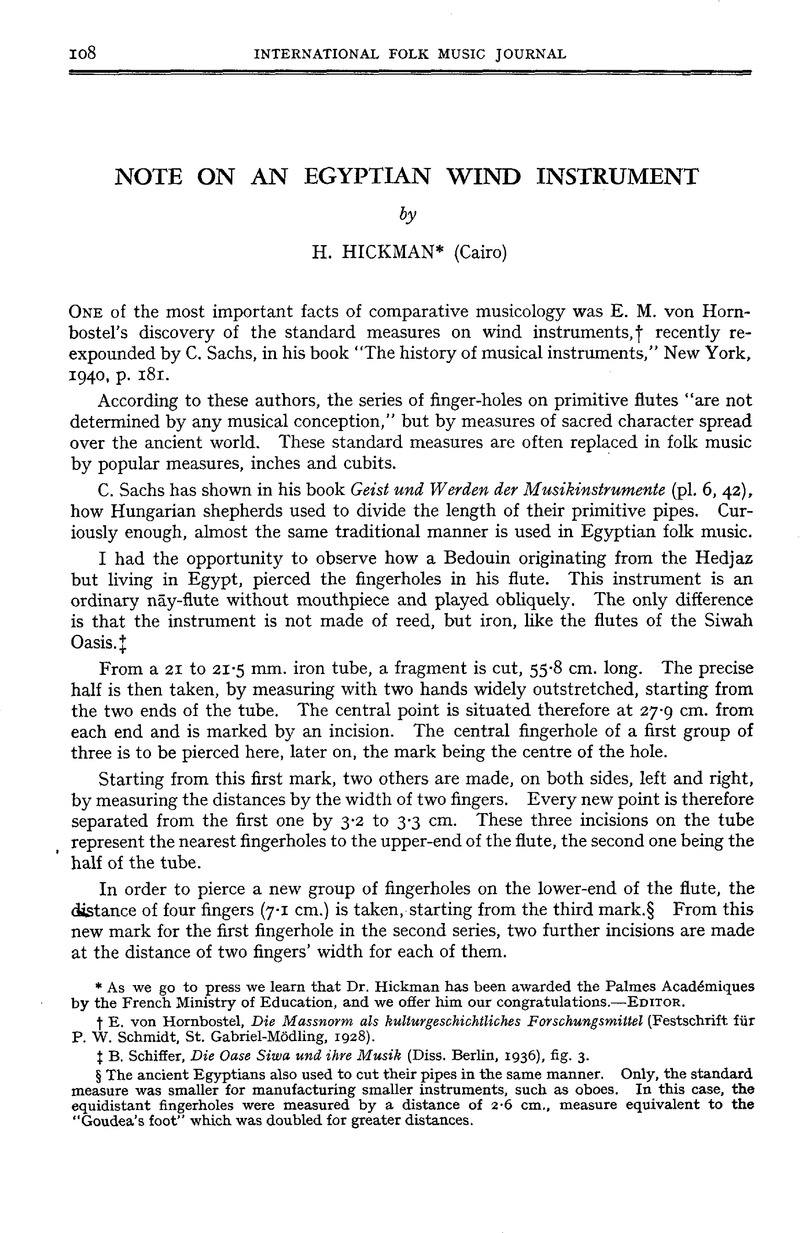Article contents
Note on an Egyptian Wind Instrument
Published online by Cambridge University Press: 07 March 2019
Abstract

- Type
- Meeting Report
- Information
- Copyright
- Copyright © International Council for Traditional Music 1951
Footnotes
As we go to press we learn that Dr. Hickman has been awarded the Palmes Acadmiques by the French Ministry of Education, and we offer him our congratulations.—EDITOR.
References
page 108 note † E. von Hornbostel, Die Massnorm als hulturgeschichtliches Forschungsmittel (Festschrift für P. W. Schmidt, St. Gabriel-Mödling, 1928).
page 108 note ‡ B. Schiffer, Die Oase Siwa und ihre Musik (Diss. Berlin, 1936), fig. 3.
page 108 note § The ancient Egyptians also used to cut their pipes in the same manner. Only, the standard measure was smaller for manufacturing smaller instruments, such as oboes. In this case, the equidistant fingerholes were measured by a distance of 2-6 cm., measure equivalent to the "Goudea's foot" which was doubled for greater distances.
page 109 note * Corresponding to the mouthpiece side of modern flutes.
page 109 note † The sixth hole has first been marked at the place corresponding to 41·6 cm. + 2 fingers' width (3·3 cm.) = 44·9 cm. from the top, but was afterwards corrected into 45·1 cm. because the distance from the last fingerhole to the lower-end ( n cm.) "was too long."
page 109 note ‡ C. Sachs, Les Instruments de Musique de Madagascar (Paris, 1938), p . 17.
page 109 note § Metallic flutes are known in Egyptian folk music (vide the näy in the Cairo Museum, No. 69819). The same problem has been studied by Sir Robert Mond and Oliver H. Myers (Temples of Armant, London, 1940) and H. Hickmann (Cat. Gén. des Instruments de Musique, p. 121). The authors of the first mentioned book seem to believe that "no such instrument is known among the Egyptian to-day."
- 1
- Cited by


